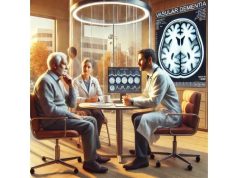What is hyperactivity disorder?
Hyperactivity Disorder, also known as Attention-Deficit/Hyperactivity Disorder (ADHD), is a neurodevelopmental condition marked by persistent patterns of inattention, hyperactivity, and impulsivity that disrupt daily functioning or development. ADHD typically manifests in childhood, but symptoms can last into adolescence and adulthood. Hyperactivity disorder affects millions of people worldwide, with estimates ranging from 5-7% of children to 2-5% of adults.
ADHD symptoms include difficulty focusing, being easily distracted, difficulty organizing tasks, fidgeting, excessive talking, and making impulsive decisions. These behaviors have a significant impact on academic, occupational, and social functioning. Although the exact cause of ADHD is still unknown, research indicates that a combination of genetic, neurological, and environmental factors contribute to its development. ADHD has traditionally been treated with a combination of behavioral therapy, educational interventions, and medication, specifically stimulants such as methylphenidate and amphetamines. However, ongoing research is looking into novel treatments that could help improve the management of this condition.
Traditional Treatments for Hyperactivity Disorder
Traditional ADHD treatment focuses on pharmacotherapy, behavioral interventions, and psychoeducation. These approaches aim to improve attention, reduce hyperactivity and impulsivity, and boost overall functioning in both children and adults. Below, we will look at the most common traditional methods for managing hyperactivity disorder.
1. Pharmacotherapy
Pharmacotherapy remains one of the most common and effective treatments for ADHD’s core symptoms. The medications used to treat ADHD are divided into two types: stimulants and non-stimulants.
- Stimulant Medications: For decades, stimulants such as methylphenidate (e.g., Ritalin, Concerta) and amphetamine (e.g., Adderall, Vyvanse) have been the primary treatment for ADHD. These medications work by increasing the levels of neurotransmitters, specifically dopamine and norepinephrine, which are important for attention and impulse control. Stimulants are effective in 70-80% of people with ADHD and have been shown to significantly reduce hyperactivity, impulsivity, and inattention.
- Methylphenidate: This stimulant works by inhibiting the reuptake of dopamine and norepinephrine in the brain, resulting in increased neurotransmitter availability. It is frequently prescribed in both short-acting and extended-release formulations, depending on the patient’s requirements.
- Amphetamines: Amphetamines increase the release of dopamine and norepinephrine while inhibiting their reuptake. They have a longer-lasting effect than methylphenidate, making them ideal for people who need to keep their symptoms under control all day.
Despite their effectiveness, stimulant medications can cause side effects such as insomnia, decreased appetite, increased heart rate, and, in some cases, increased anxiety. Long-term use necessitates regular monitoring to address potential side effects and adjust dosages as needed.
- Non-Stimulant Medications: Non-stimulant medications provide an alternative treatment option for people who do not respond well to stimulants or who experience unpleasant side effects. One of the most commonly prescribed non-stimulants is atomoxetine (Strattera), which works by inhibiting norepinephrine reuptake, improving attention and impulse control without the stimulant properties of drugs such as methylphenidate.
- Guanfacine and Clonidine: These medications, which were originally used to treat high blood pressure, are occasionally prescribed off-label for ADHD. They target specific brain receptors that regulate attention and behavior. Guanfacine (Intuniv) and clonidine (Kapvay) are commonly used as adjunct therapies or for children who have tics or anxiety in addition to ADHD.
2. behavioral therapy
Behavioral therapy is a critical component of ADHD treatment, particularly for younger children or those who prefer to avoid medication use. Behavioral interventions aim to change problematic behaviors through reinforcement strategies while also assisting individuals in developing symptom-management skills.
- Parent Training: Parent training programs are essential for children with ADHD. These programs teach parents how to encourage positive behavior, improve communication skills, and establish structured routines at home. Parents learn how to use reinforcement strategies such as praise or rewards to increase attention and decrease impulsive behavior.
- Cognitive Behavioral Therapy (CBT): CBT is a structured, goal-oriented psychotherapy that assists ADHD patients in recognizing and challenging negative thought patterns and behaviors. It also covers coping strategies for impulsivity, distractibility, and emotional regulation. Adults with ADHD frequently combine CBT with medication to address the disorder’s emotional and cognitive components.
- Classroom Behavioral Interventions: In schools, behavioral therapy may entail collaborating with teachers to create structured classroom environments that reduce distractions and provide positive reinforcement for appropriate behavior. Token economies, daily report cards, and personalized learning plans can help children with ADHD improve their academic performance and behavior in the classroom.
3. Psychoeducation
Psychoeducation entails providing individuals with ADHD and their families with a thorough understanding of the condition. Learning about ADHD can help people and their families overcome obstacles, reduce stigma, and improve outcomes. It frequently entails educating parents, caregivers, and teachers about the disorder, treatment options, and how to create positive environments that promote success.
4. Dietary and lifestyle modifications
Although there is limited evidence that diet alone can treat ADHD, certain dietary and lifestyle changes may be beneficial. For example:
- Omega-3 Fatty Acids: Some research suggests that omega-3 fatty acid supplementation, particularly EPA and DHA, can help improve attention and reduce hyperactivity. Omega-3s are thought to benefit brain health by improving neurotransmitter function and decreasing inflammation.
- Physical Activity: Exercise has been shown to improve attention, reduce impulsivity, and boost mood in people with ADHD. Regular physical activity has been shown to increase dopamine and norepinephrine levels in the brain, which are important for regulating attention and behavior. Running, swimming, and martial arts are especially beneficial to children with ADHD.
- Nutritional Considerations: Some parents choose to change their child’s diet to avoid artificial food dyes, preservatives, and high-sugar foods, which can worsen hyperactivity in some cases. However, research into the effects of these dietary changes is inconclusive.
5. School and Education Support
Children with ADHD frequently benefit from special educational support and accommodations. Many schools provide Individualized Education Plans (IEPs) or 504 plans, which outline specific strategies and supports to help students succeed academically. This could include extra test time, a quieter testing environment, or modified homework assignments. Teachers may also use specific teaching techniques, such as breaking down tasks into smaller steps, to assist students with ADHD in remaining focused and organized.
Groundbreaking Innovations in Hyperactivity Disorder Treatment
In recent years, ADHD treatment has advanced significantly beyond traditional pharmacotherapy and behavioral interventions. These cutting-edge innovations are centered on personalized medicine, neurotechnological advancements, and novel therapeutic modalities that aim to improve treatment outcomes while minimizing side effects.
1. Neurofeedback therapy
Neurofeedback, also known as EEG biofeedback, is a new treatment for ADHD that uses real-time monitoring of brain activity to teach people how to control their brain waves. According to research, people with ADHD frequently exhibit abnormal brain activity patterns, particularly in regions responsible for attention and impulse control.
- How it Works: During neurofeedback sessions, people wear an EEG cap that monitors their brain waves while they perform activities like playing video games. The goal is to train the brain to produce more optimal patterns of activity, such as increasing beta waves associated with concentration and decreasing theta waves associated with inattention.
- Efficacy: Studies indicate that neurofeedback can reduce ADHD symptoms, particularly in children who do not respond well to medication or prefer non-pharmacological treatments. While more research is needed to determine its long-term benefits, neurofeedback shows promise as a drug-free treatment that directly targets the brain’s electrical activity.
2. Digital Therapeutics and Mobile Applications
Digital therapeutics and mobile apps are transforming the way ADHD is managed, providing personalized and accessible treatment options to people of all ages. These tools offer a variety of interventions, including cognitive training exercises, real-time symptom tracking, and coaching.
- Akili Interactive’s EndeavorRx: One of the most groundbreaking innovations in ADHD treatment is EndeavorRx, a digital therapeutic designed specifically for children with ADHD. EndeavorRx, approved by the FDA in 2020, is the first prescription video game designed to improve attention function in children aged 8 to 12 years. The game is intended to stimulate cognitive pathways in the brain associated with attention, offering a novel and engaging way to improve focus without medication.
- Symptom-Tracking Apps: There are many mobile apps available to help people with ADHD manage their symptoms. These apps frequently include tools for tracking medication, setting reminders, and providing behavioral tips to improve productivity. Real-time data from these apps can also be shared with healthcare providers to improve treatment plans.
3. Transcranial Magnetic Stimulation (TMS)
Transcranial Magnetic Stimulation (TMS) is a non-invasive brain stimulation technique that employs magnetic fields to stimulate nerve cells in brain regions associated with attention and executive function. TMS is being investigated as a potential treatment for ADHD because of its ability to modulate brain activity and improve cognitive control.
- Mechanism: TMS works by sending magnetic pulses to the prefrontal cortex, a brain region responsible for decision-making, attention, and impulse control. TMS stimulates this region in order to normalize brain activity in people with ADHD. The treatment is typically given in multiple sessions and has shown promise in improving both attention and behavior regulation.
- Efficacy: Early research on TMS for ADHD has shown improvements in attention span, impulsivity, and overall cognitive function. Although the research is still in its early stages, TMS may provide a non-invasive alternative for people who do not respond well to traditional medications. It is particularly appealing to adults with ADHD who are looking for non-pharmacological treatment options.
4. Gene Testing and Personalized Medicine
As our understanding of ADHD’s genetic underpinnings grows, personalized medicine has emerged as a promising strategy for optimizing treatment. Genetic testing can help identify specific genetic markers that influence how a person metabolizes medications, resulting in more precise and effective treatment plans.
- Pharmacogenomics: Pharmacogenomics is the study of how genes influence a person’s response to medications. Genetic testing can aid in ADHD treatment by determining which medications are most likely to be effective for a given individual based on their genetic makeup. Variations in genes encoding dopamine and norepinephrine receptors, for example, may predict how well a person responds to stimulant medications.
- Tailored Treatment Plans: Genetic testing enables clinicians to create tailored treatment plans, reducing the trial-and-error approach traditionally used in ADHD management. Patients can benefit from faster symptom relief and fewer side effects if medications are chosen based on their genetic profile.
5. Cognitive and Brain-Training Programs
Cognitive training, also known as brain training, consists of structured activities aimed at improving cognitive abilities such as working memory, attention, and problem-solving skills. These programs are especially beneficial to people with ADHD who struggle with executive functioning.
- Working Memory Training: One type of cognitive training is working memory training, which consists of tasks designed to improve the brain’s ability to retain and manipulate information. Working memory deficits are common in ADHD patients, so these exercises can help improve focus, reduce impulsivity, and improve academic or work performance.
- Digital Brain Training Platforms: Digital platforms like Lumosity and Cogmed provide a variety of cognitive exercises that focus on attention, memory, and executive function. While these programs do not replace traditional treatments, they can be useful supplementary tools for helping people with ADHD improve their cognitive skills.
6. Virtual Reality Therapy
Virtual Reality (VR) therapy is another exciting innovation being investigated for ADHD treatment. VR environments provide immersive, controlled settings in which people can practice attention, impulse control, and emotional regulation in real time.
- How it Works: VR therapy for ADHD typically consists of scenarios that test the individual’s ability to concentrate and ignore distractions. For example, a VR program could simulate a classroom environment in which the individual must complete tasks while ignoring irrelevant stimuli. This type of training allows people with ADHD to improve their real-world attention skills in a safe, virtual setting.
- Clinical Applications: Although research into VR therapy for ADHD is still in its early stages, preliminary findings indicate that it could be an effective tool for improving attention and reducing impulsivity, particularly in children. As VR technology advances, it is expected to become a more common tool in ADHD treatment programs.
Holistic and Alternative Treatments for Hyperactivity Disorder
In addition to traditional and cutting-edge medical treatments, many ADHD patients benefit from holistic and alternative approaches that emphasize overall wellness. These methods can supplement traditional therapies and help manage symptoms in a more natural manner.
1. Mindfulness & Meditation
Mindfulness practices, including meditation, are now recognized as effective complementary treatments for ADHD. Mindfulness encourages people to focus on the present moment and become more aware of their thoughts, emotions, and behaviors.
- Mindfulness-Based Cognitive Therapy (MBCT): This therapeutic approach combines mindfulness meditation with cognitive behavioral strategies to assist people with ADHD in becoming more aware of their thoughts and decreasing automatic, impulsive reactions. MBCT has been shown to improve attention and reduce stress levels in both children and adults with ADHD.
- Breathing Exercises and Meditation: Simple breathing exercises and mindfulness meditation techniques can assist people with ADHD in managing anxiety, improving focus, and reducing impulsivity. Regular mindfulness practice can help with emotional regulation and promote a sense of calm.
2. Nutrition Therapy
Diet helps manage ADHD symptoms, and nutritional therapy focuses on improving brain health through proper nutrition. While there is no single diet that can cure ADHD, certain nutritional approaches may help reduce hyperactivity and improve attention.
- Elimination Diets: Some people with ADHD benefit from elimination diets, which eliminate artificial additives, food dyes, and high-sugar foods that can aggravate symptoms. The Feingold Diet, for example, removes synthetic additives and has been shown to reduce hyperactivity in some children.
- Omega-3 Supplements: Omega-3 fatty acids, specifically EPA and DHA, have been shown to improve attention and behavior in children with ADHD. Omega-3s help the brain function and reduce inflammation, and supplementation may be a natural way to improve focus and reduce impulsive behavior.
- Balanced Diet: A diet high in whole foods like fruits, vegetables, lean proteins, and whole grains contains essential nutrients that promote brain health. Providing a nutrient-dense diet to people with ADHD can help improve their mood, focus, and energy levels.
3. Yoga and Physical Exercise.
Physical activity, including yoga, is an effective way to manage ADHD symptoms. Regular exercise boosts the production of neurotransmitters like dopamine and norepinephrine, which are necessary for attention and impulse control.
- Yoga for ADHD: Yoga combines physical movement, mindfulness, and breathing exercises, making it an excellent holistic practice for people with ADHD. Yoga has been shown in studies to reduce hyperactivity, improve focus, and promote emotional regulation in both children and adults with ADHD.
- Aerobic Exercise: Regular aerobic activity, such as running, swimming, or cycling, can help people with ADHD improve their attention and reduce restlessness. Exercise increases blood flow to the brain, improves cognitive function, and releases excess energy.
4. Herbal Supplements
Some herbal supplements are thought to promote brain health and may help with ADHD symptoms. While more research is needed to determine the efficacy of these treatments, certain herbs have long been used to improve concentration and reduce hyperactivity.
- Ginkgo Biloba: Ginkgo biloba is thought to boost cognitive function and attention by increasing blood flow to the brain. Some studies suggest that it may be beneficial for people with ADHD, but more research is needed.
- Bacopa Monnieri: Bacopa monnieri, a herb commonly used in Ayurvedic medicine, has been investigated for its ability to improve memory and focus. It is thought to work by improving neurotransmitter function and decreasing oxidative stress in the brain.
- Valerian Root: Valerian root is commonly used to promote relaxation and reduce anxiety, which can be beneficial for people with ADHD who experience restlessness and impulsivity.
5. Acupuncture
Some ADHD patients use acupuncture, a traditional Chinese medicine practice, as a supplement to their treatment. Acupuncture is the practice of inserting fine needles into specific points on the body to balance the flow of energy (Qi) and promote overall health.
- Stress Reduction: Acupuncture is thought to reduce stress and anxiety, which can worsen ADHD symptoms. Acupuncture, by promoting relaxation and improving energy balance, may help people with ADHD feel calmer and focused.
- Limited Research: While anecdotal evidence supports the use of acupuncture for ADHD, scientific research into its efficacy remains limited. However, some people find it to be an effective complementary treatment when combined with other therapies.











